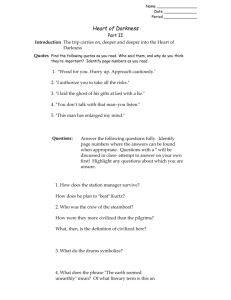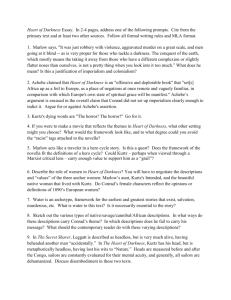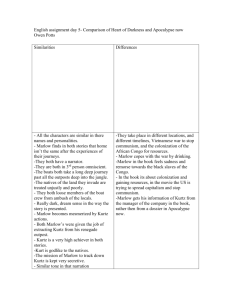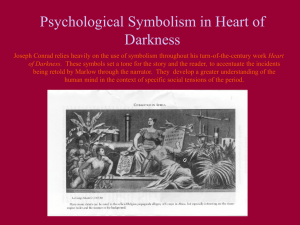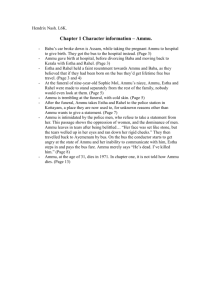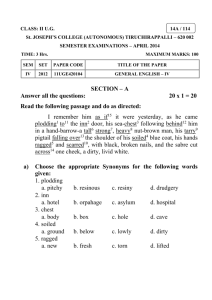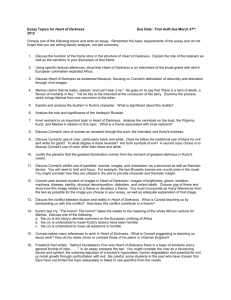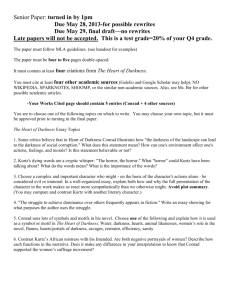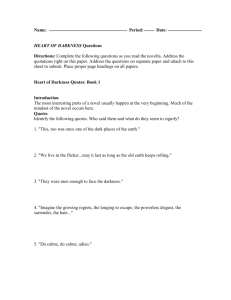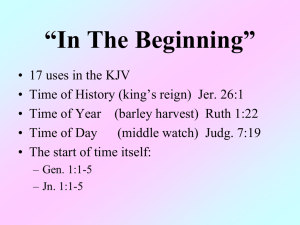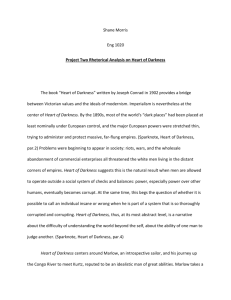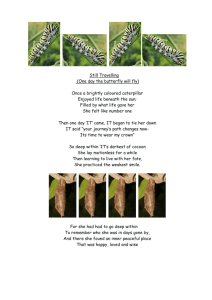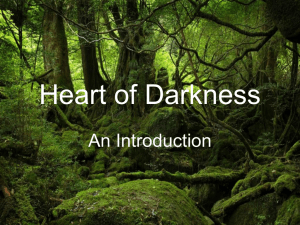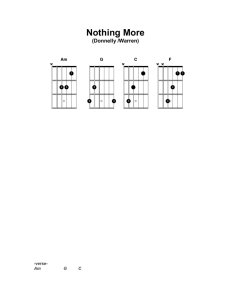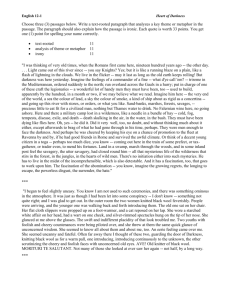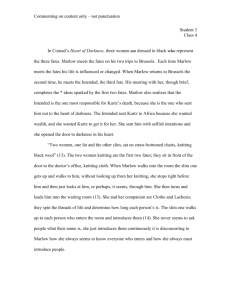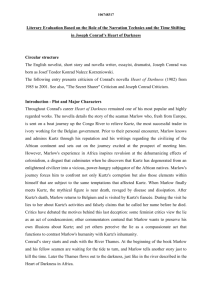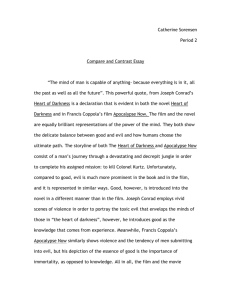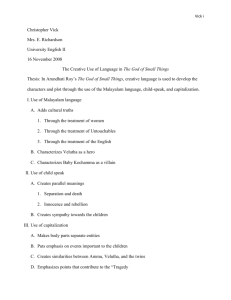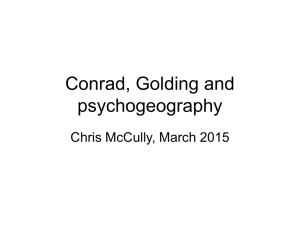Heart of Darkness/God of Small Things Journal
advertisement
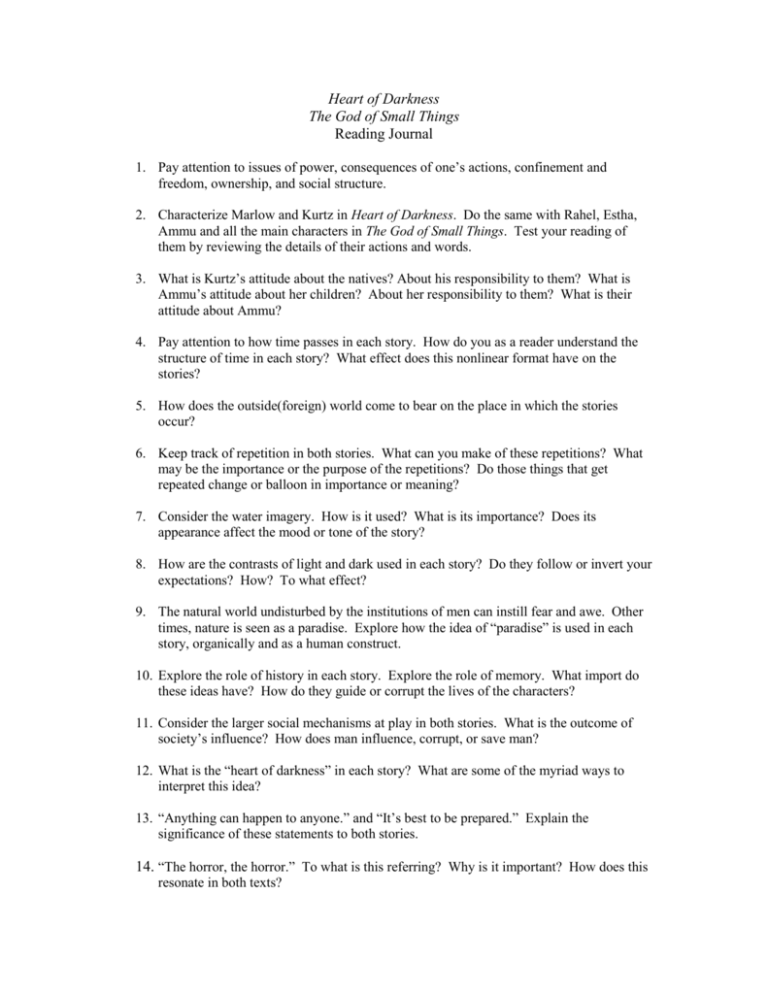
Heart of Darkness The God of Small Things Reading Journal 1. Pay attention to issues of power, consequences of one’s actions, confinement and freedom, ownership, and social structure. 2. Characterize Marlow and Kurtz in Heart of Darkness. Do the same with Rahel, Estha, Ammu and all the main characters in The God of Small Things. Test your reading of them by reviewing the details of their actions and words. 3. What is Kurtz’s attitude about the natives? About his responsibility to them? What is Ammu’s attitude about her children? About her responsibility to them? What is their attitude about Ammu? 4. Pay attention to how time passes in each story. How do you as a reader understand the structure of time in each story? What effect does this nonlinear format have on the stories? 5. How does the outside(foreign) world come to bear on the place in which the stories occur? 6. Keep track of repetition in both stories. What can you make of these repetitions? What may be the importance or the purpose of the repetitions? Do those things that get repeated change or balloon in importance or meaning? 7. Consider the water imagery. How is it used? What is its importance? Does its appearance affect the mood or tone of the story? 8. How are the contrasts of light and dark used in each story? Do they follow or invert your expectations? How? To what effect? 9. The natural world undisturbed by the institutions of men can instill fear and awe. Other times, nature is seen as a paradise. Explore how the idea of “paradise” is used in each story, organically and as a human construct. 10. Explore the role of history in each story. Explore the role of memory. What import do these ideas have? How do they guide or corrupt the lives of the characters? 11. Consider the larger social mechanisms at play in both stories. What is the outcome of society’s influence? How does man influence, corrupt, or save man? 12. What is the “heart of darkness” in each story? What are some of the myriad ways to interpret this idea? 13. “Anything can happen to anyone.” and “It’s best to be prepared.” Explain the significance of these statements to both stories. 14. “The horror, the horror.” To what is this referring? Why is it important? How does this resonate in both texts?
